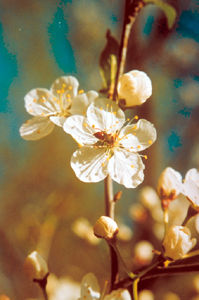
Damselfly, thin-bodied, carnivorous insect with 2 pairs of long, membranous, narrow-based wings. Damselflies belong to order Odonata [Gk "toothed," referring to mouth parts], suborder Zygoptera. There are over 2800 known species worldwide, most in the tropics, 51 in Canada.
Structure
Adults are brightly coloured, generally about 3 cm long, with mobile heads and large, compound eyes. Larvae are aquatic, usually dark in colour, and characterized by 3 flat tail appendages, probably serving as gills.
Diet
Larvae shoot out a peculiarly modified, toothed mouth part (labium) to capture small aquatic insects and worms; adults sweep up small, flying insects with their legs.
Reproduction and Development
Eggs are placed in aquatic plants. Although some species may spend over 3 years as larvae, larval stages of Canadian species usually last only one year. Transformation to the adult occurs after the larva leaves the water. Adults live for a few weeks and usually remain near water. See also Dragonfly.

 Share on Facebook
Share on Facebook Share on X
Share on X Share by Email
Share by Email Share on Google Classroom
Share on Google Classroom


